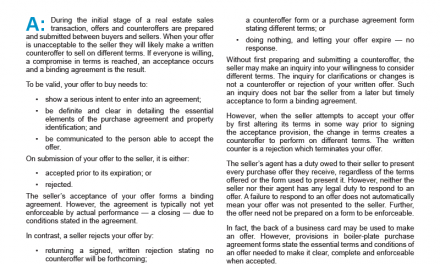Landlords and tenants have had a wild ride during the pandemic and 2020 recession, materializing into disrepair and disarray within residential rental properties themselves.
The nation was under an eviction moratorium from March 2020 through the last week of August 2021, prohibiting landlords from evicting tenants for nonpayment of rent.
The eviction moratorium imposed a financial strain on landlords, especially small mom-and-pop landlords who operate on much slimmer margins.
Editor’s note — At the start of August, the eviction moratorium was extended an additional time after it was said to be the last. However, the August 26, 2021 Supreme Court ruling has declared the federal eviction moratorium is no longer enforceable, though California’s statewide eviction moratorium will remain in place through September 30, 2021.
As the disruption of rental income has prevented landlords from covering costs, maintenance needs have been neglected. This is evidenced by a May 2021 survey conducted by the Urban Institute, which finds financial reasons are the main contributing factor behind deferred maintenance for residential rental properties.
Altogether, 28% of residential rental property landlords reported deferring maintenance on at least one of their units during the pandemic, though landlords who lost rental income were far more likely to skip maintenance.
41% of landlords who lost rental income reported deferring maintenance needs. In contrast, just 18% of those who did not lose rental income deferred maintenance on their properties.
When maintenance is needed, it is often put off for a significant portion of time as well. 56% of landlords who reported they deferred maintenance did so during the pandemic for at least six months. 17% deferred maintenance for over a year.
Options for landlords neglecting maintenance needs
Although many landlords have deferred maintenance during the pandemic, doing so creates problems.
For tenants, deferring maintenance affects their safety and quality of life when their units are in a state of disrepair. For landlords, they are duty bound through their rental and lease agreements to keep their units continuously fit for human occupancy.
Related article:
Letter to the editor: Who performs the maintenance and repairs: the tenant, or the landlord?
Additionally, for the landlord, deferring maintenance often results in more expensive future repairs. In fact, 27% of repairs needed as reported in the survey involved serious structural repairs — a major safety issue. 28% involved plumbing issues. When these issues are ignored, they tend to accumulate, or result in disaster. The June 2021 collapse of a high-rise condo in Florida paints a potent picture of how detrimental it can be to overlook or neglect maintenance needs as a landlord.
For landlords experiencing hardships in addressing these structural, plumbing and other repairs, federal loans are available for assistance. Up to $25,000 is available under Title I property improvement loan insurance. Under Title I, loans are made available to residential and commercial properties to fund light to moderate improvements. For more information, visit the U.S. Department of Housing and Urban Development (HUD).
When California’s eviction moratorium ends, currently scheduled to run through September 30, 2021, landlords may begin the eviction process for tenants who do not pay their delinquent balance of rent.
Although statewide rental relief is available to landlords, the distribution of those funds has been slow to reach the hands of California landlords. By the time the Rental Housing Recovery Act (Rental Recovery Act) was passed in California just days before the moratorium’s expiration in late June, less than 15% of available state funds in existence through Senate Bill (SB) 91 were distributed to landlords who applied for rent relief, according to the California Apartment Association (CAA).
Despite the setbacks, applying for rental assistance is the only way to receive 100% of missed payments from the state government. When you are a California landlord with a tenant who is delinquent on rent, and the tenant qualifies based on income level, you may apply for California’s rental assistance by visiting: http://housing.ca.gov.
Landlords: don’t let deferred maintenance chip away at your success. Today’s elongated period of non-paying tenants will come to an end soon, and when it does, you will need a plan to catch up and return your property to proper living conditions. Options are available to assist you in maintaining a habitable and safe environment for your tenants.
Related article:
Landlords, tenants in the dark about Emergency Rental Assistance















Regarding that building in Florida, I think it was more than just deferred maintenance. I think there were fundamental construction issues with the foundation, structure, water drainage when it was built. But yeah, they knew there were big problems that needed to be addressed since 2018 and they did nothing about it until it was too late.
The distinction has to be made however, that it wasn’t an apartment building, but a condo complex. There wasn’t one owner/landlord responsible for the whole thing. It was going to cost each owner a hefty sum. They should have done the work and then sued the builder for their money back!!!!!!
So landlords not getting rent payments can get a loan that has to be repaid for maintenance issues. My non paying tenant is not required to get a loan to pay rent although her income is above the limits for rental assistance but under $100,000.
You’ll be able to evict her soon and file a claim with the state for the deficiency. In the meantime, a loan may be necessary for urgent repairs like plumbing if cash isn’t readily available. I think that’s the point they’re trying to make.